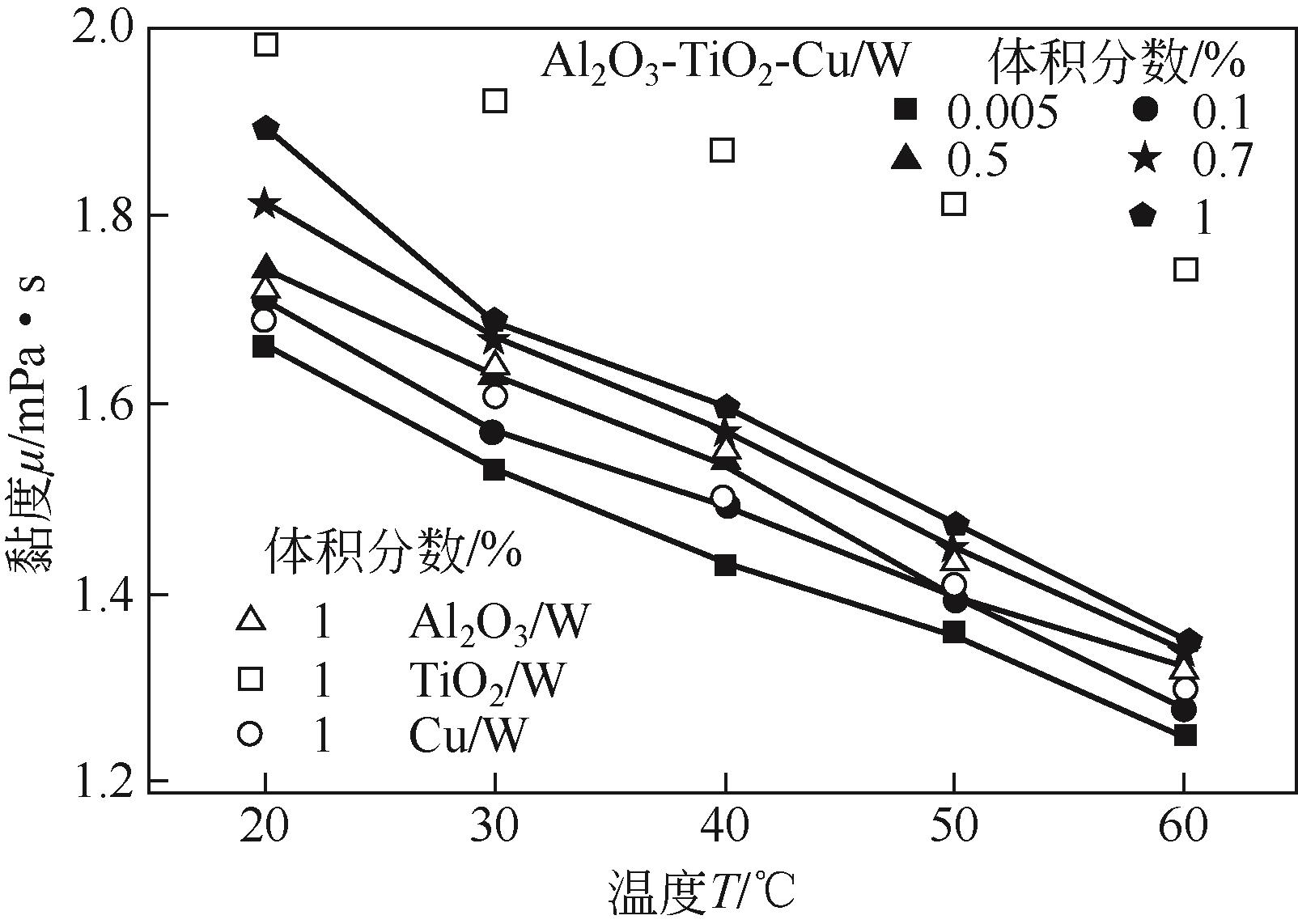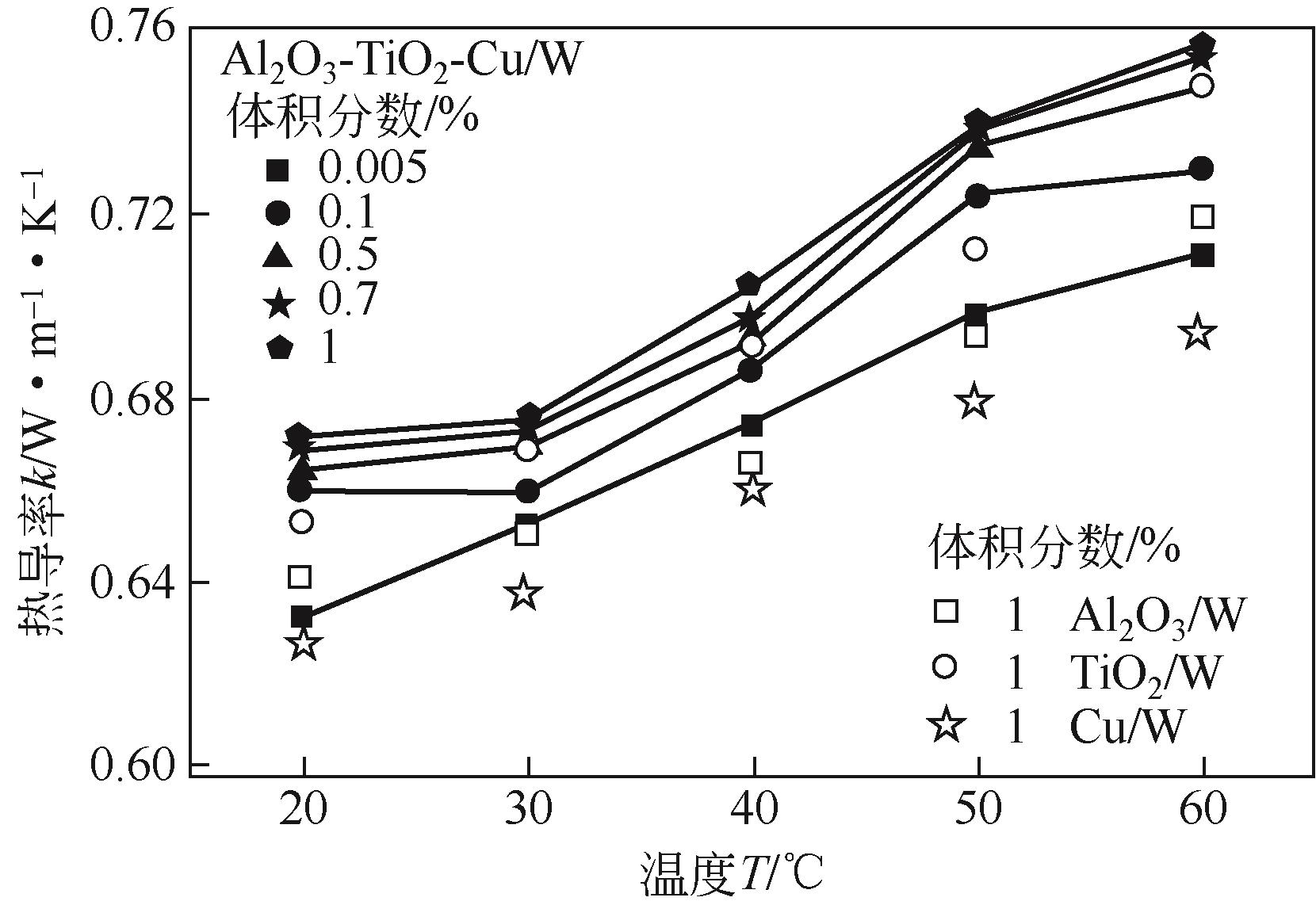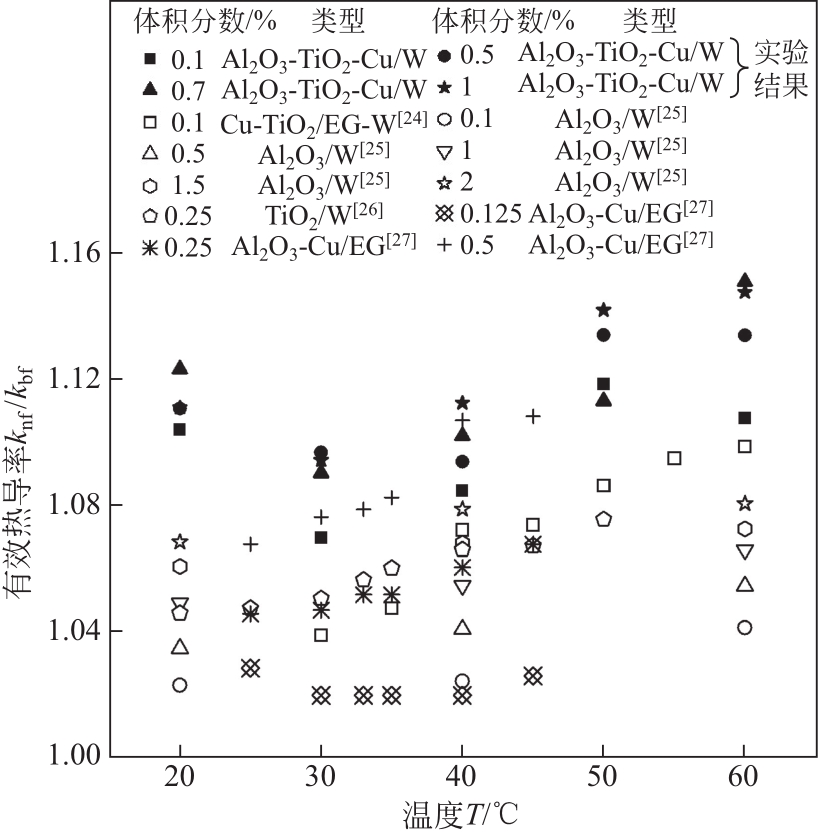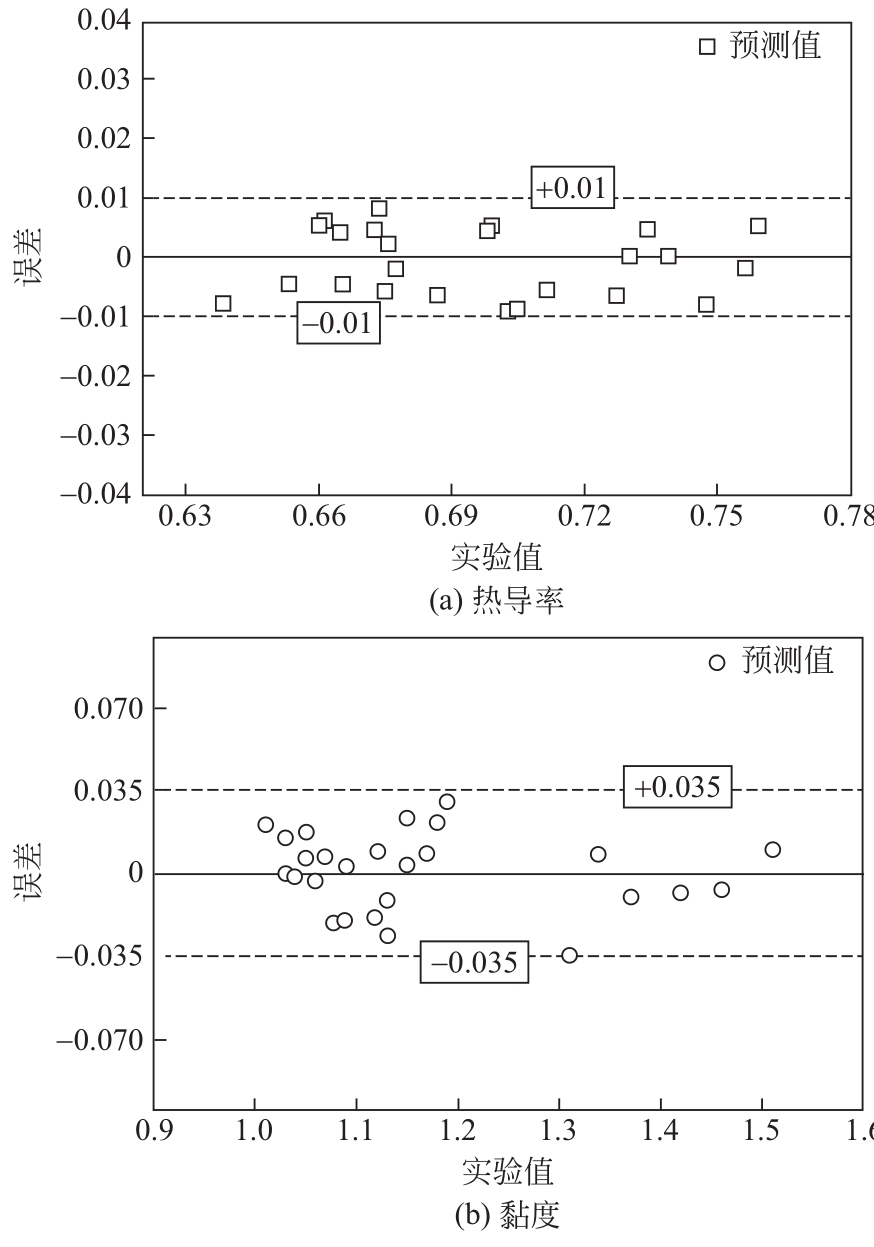| 1 |
LEE S, CHOI S U S, LI S, et al. Measuring thermal conductivity of fluids containing oxide nanoparticle[J]. Journal of Heat Transfer, 1999, 121(2): 280-289.
|
| 2 |
翟玉玲, 王江, 李龙, 等. 粒径混合比对Al2O3/水纳米流体传热性能影响及评价[J]. 化工进展, 2019, 38(11): 4865-4872.
|
|
ZHAI Yuling, WANG Jiang, LI Long, et al. Influence of particle size mixing ratio on heat transfer performance of Al2O3/water nanofluid and its evaluation[J]. Chemical Industry and Engineering Progress, 2019, 38(11): 4865-4872.
|
| 3 |
臧徐忠, 石尔, 傅俊萍, 等. 磁场调控磁性纳米流体流动和传热研究进展[J]. 化工进展, 2019, 38(12): 5410-5419.
|
|
ZANG Xuzhong, SHI Er, FU Junping, et al. Advances in research on magnetic nanofluid flow and heat transfer controlled by magnetic field[J]. Chemical Industry and Engineering Progress, 2019, 38(12): 5410-5419.
|
| 4 |
BABU J A R, KUMAR K. K, RAO S S. State-of-art review on hybrid nanofluids[J]. Renewable and Sustainable Energy Reviews, 2017, 77: 551-565.
|
| 5 |
MADHESH D, KALAISELVAM S. Experimental analysis of hybrid nanofluid as a coolant[J]. Procedia Engineering, 2014, 97: 1667-1675.
|
| 6 |
HAMID K A, AZMI W H, NABIL M F, et al. Experimental investigation of thermal conductivity and dynamic viscosity on nanoparticle mixture ratios of TiO2-SiO2 nanofluids[J]. International Journal of Heat and Mass Transfer, 2018, 116: 1143-1152.
|
| 7 |
KUMAR D D, ARASU A V. A comprehensive review of preparation, characterization, properties and stability of hybrid nanofluids[J]. Renewable and Sustainable Energy Reviews, 2018, 81: 1669-1689.
|
| 8 |
MEHRALI M, SADEGHINEZHAD E, ROSEN M, et al. Effect of specific surface area on convective heat transfer of graphene nanoplatelet aqueous nanofluids[J]. Experimental Thermal and Fluid Science, 2015, 68: 100-108.
|
| 9 |
CAKMAK N K, SAID Z, SUNDAR L S, et al. Preparation, characterization, stability, and thermal conductivity of rGO-Fe3O4-TiO2 hybrid nanofluid: an experimental study[J]. Powder Technology, 2020, 372: 235-245.
|
| 10 |
SAHOO R R. Experimental study on the viscosity of hybrid nanofluid and development of a new correlation[J]. Heat and Mass Transfer, 2020, 56: 3023-3033.
|
| 11 |
SAHOO R R, KUMAR V. Development of a new correlation to determine the viscosity of ternary hybrid nanofluid[J]. International Communications in Heat and Mass Transfer, 2020, 111: 104451.
|
| 12 |
MOUSAVI S M, ESMAEILZADEH F, WANG Xiaopo. Effects of temperature and particles volume concentration on the thermophysical properties and the rheological behavior of CuO/MgO/TiO2 aqueous ternary hybrid nanofluid[J]. Journal of Thermal Analysis and Calorimetry, 2019, 137: 879-901.
|
| 13 |
Bock Choon PAK, Yuung I CHO. Hydrodynamic, and heat transfer study of dispersed fluids with submicron metallic oxide particles[J]. Experimental Heat Transfer: a Journal of Thermal Energy Generation, Transport, Storage, and Conversion, 1998 11(2): 151-170.
|
| 14 |
SAHOO R R. Thermo-hydraulic characteristics of radiator with various shape nanoparticle-based ternary hybrid nanofluid[J]. Powder Technology, 2020, 370: 19-28.
|
| 15 |
杨世铭. 传热学[M]. 4版. 北京: 高等教育出版社, 2006: 563.
|
|
YANG Shiming. Heat transfer[M]. 4nd ed. Beijing: Higher Education Press, 2006: 563.
|
| 16 |
DAS P K. A review based on the effect and mechanism of thermal conductivity of normal nanofluids and hybrid nanofluids[J]. Journal of Molecular Liquids, 2017, 240: 420-446.
|
| 17 |
OSHO I W, OKONKWO E C, KAVAZ D, et al. An experimental investigation into the effect of particle mixture ratio on specific heat capacity and dynamic viscosity of Al2O3-ZnO hybrid nanofluids[J]. Powder Technology, 2020, 363: 699-716.
|
| 18 |
ALLAIN C, CLOITRE M, WAFRA M. Aggregation and sedimentation in colloidal suspensions[J]. Physical Review Letters, 1995, 74: 1478-1481.
|
| 19 |
ESFE M H, ESFANDEH S, NIAZI S. An experimental investigation, sensitivity analysis and RSM analysis of MWCNT(10)-ZnO(90)/10W40 nanofluid viscosity[J]. Journal of Molecular Liquids, 2019, 288: 111020.
|
| 20 |
ESFE M H, ROSAMIAN H, SARLAK M R. A novel study on rheological behavior of ZnO-MWCNT/10W40 nanofluid for automotive engines[J]. Journal of Molecular Liquids, 2018, 254: 406-413.
|
| 21 |
RICHMOND W R, JONESA R L, FAWELL P D. The relationship between particle aggregation and rheology in mixed silica-titania suspensions[J]. Chemical Engineering Journal, 1998, 71: 67-75.
|
| 22 |
XIE Huaqing, FUJII M, ZHANG Xing. Effect of interfacial nanolayer on the effective thermal conductivity of nanoparticle-fluid mixture[J]. International Journal of Heat and Mass Transfer, 2006, 48: 2926-2932.
|
| 23 |
KEBLINSKI P, EASTMAN J, CAHILL D. Nanofluids for thermal transport[J]. Materials Today, 2005, 8: 36-44.
|
| 24 |
ESFE M H, WONGWISES S, NADERI A, et al. Thermal conductivity of Cu/TiO2-water/EG hybrid nanofluid: experimental data and modeling using artificial neural network and correlation[J]. International Communications in Heat and Mass Transfer, 2015, 66: 100-104.
|
| 25 |
DAS P K, ISLAM N, SANTRA A K, et al. Experimental investigation of thermophysical properties of Al2O3-water nanofluid: role of surfactants[J]. Journal of Molecular Liquids, 2017, 237: 304-312.
|
| 26 |
ZHANG Hao, QING Shan, ZHAI Yuling, et al. The changes induced by pH in TiO2/water nanofluids: stability, thermophysical properties and thermal performance[J]. Powder Technology, 2019, 377: 748-759.
|
| 27 |
PARSIAN A, AKBARI M. New experimental correlation for the thermal conductivity of ethylene glycol containing Al2O3-Cu hybrid nanoparticles[J]. Journal of Thermal Analysis and Calorimetry, 2018, 131: 1605-1613.
|
 ), 翟玉玲1(
), 翟玉玲1( ), 轩梓灏1, 周树光2, 李志祥2
), 轩梓灏1, 周树光2, 李志祥2
 ), ZHAI Yuling1(
), ZHAI Yuling1( ), XUAN Zihao1, ZHOU Shuguang2, LI Zhixiang2
), XUAN Zihao1, ZHOU Shuguang2, LI Zhixiang2









